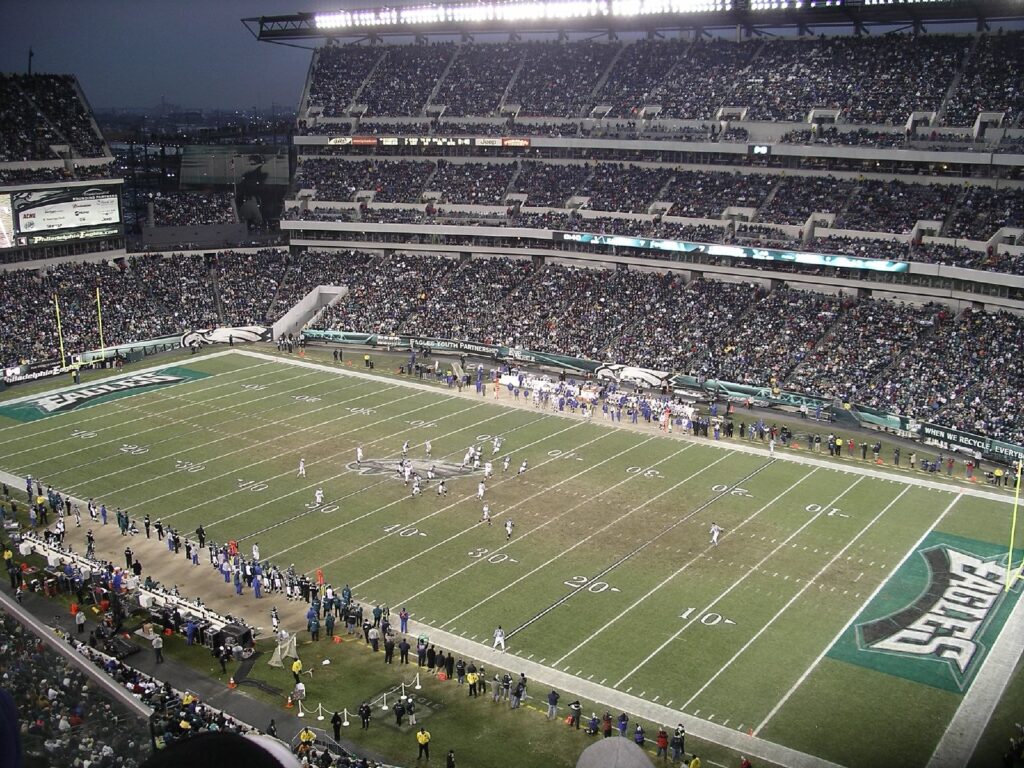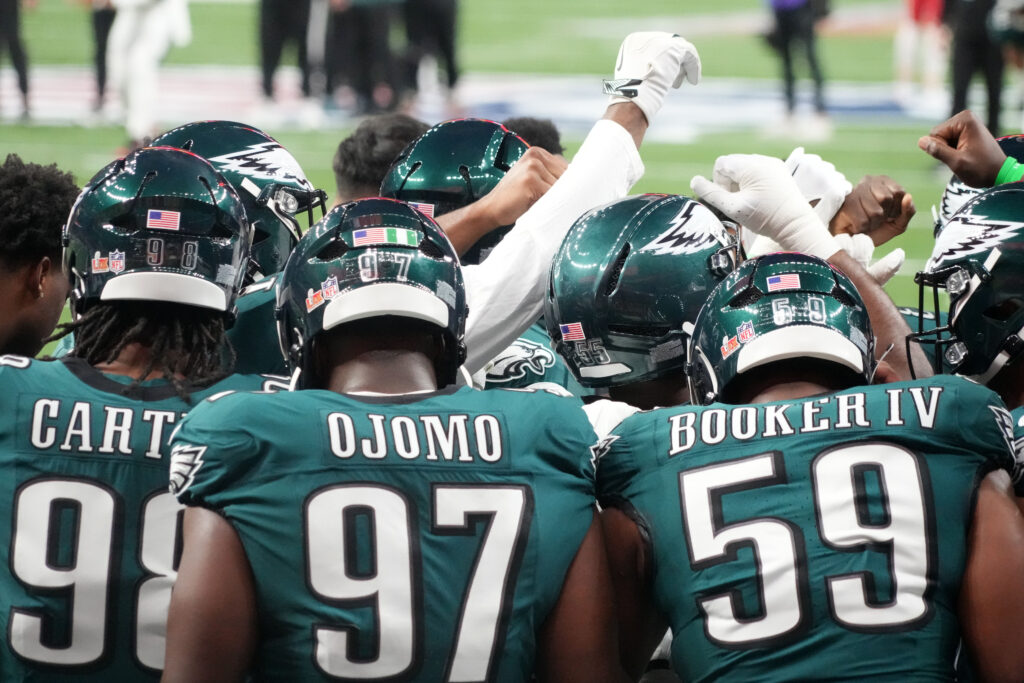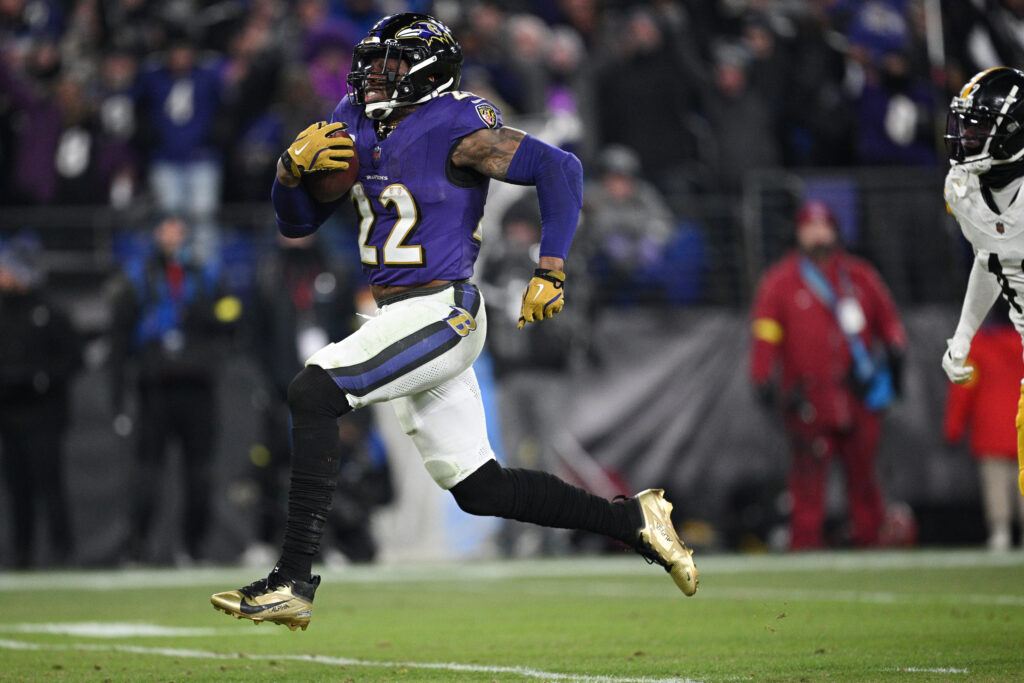Those who witnessed the 2004 Philadelphia Eagles defense would never forget the sheer dominance displayed by this legendary squad. The Eagles, who had suffered back-to-back-to-back NFC Championship losses, were on a mission to claim their spot as the best team in the league. Led by the unparalleled defensive mind of Jim Johnson, the 2004 Eagles achieved that mission by reaching the Super Bowl for the first time since 1980. At the forefront of this historic team was a defense that made the rest of the NFL teams look average. From the ferocity in their tackling to the creative play calls, this was a defense that would go down in history.
Johnson’s playbook was a masterclass in defense, and the 2004 team had the players to execute it with precision. The Eagles’ defense was anchored by hard-hitting linebackers like Jeremiah Trotter, Dhani Jones, and Mark Simoneau, who would generate a formidable pass rush. At the same time, the secondary was stacked with talent such as Lito Sheppard, Sheldon Brown, and Brian Dawkins, who hunted down the ball with expert precision. The front four was led by Jevon Kearse, Trent Cole, Jerome McDougle, and Darwin Walker, who wreaked havoc in the backfield by constantly pressuring the opposing quarterbacks.
Johnson always had something up his sleeve for wary oppositions. His aggressive and innovative play-calling made the Eagles defense a constant threat. Whether it was constant blitzing, hidden coverages, or disguised fronts, he had a bag of tricks that he used to confuse offenses.
The Unforgettable ’04 Eagles Defense with Jim Johnson
“Without him using me the way he used me, I think I still would have had a good career,” Dawkins said at a conference call Tuesday. “But if you look at my ability to affect the game in pretty much every statistical category, that had a lot to do with Jim running the defense kind of through me a lot of times. And that’s unheard of for a defensive coordinator to run a defense through a safety. His willingness to go away from traditional thinking, he allowed me and my gifts and opened the floodgates. That relationship developed over the years.”
The Eagles’ defense played like a well-oiled machine, with each component feeding off the others. They held opponents to just 260 total points the entirety of the season, the second-fewest in the NFL in 2004. They held opposing quarterbacks to a passer rating of only 62.3 and a completion rate of 54.7%. They led the league in interceptions with 23 and were 5th in the league in total sacks with 47. In the playoffs, they held the Minnesota Vikings and their dynamic wide receivers, Randy Moss and Nate Burleson, to just 14 points, then locked down the Atlanta Falcons and their star quarterback, Michael Vick, to only 10 points.
Despite their success, the Eagles defense fell just short in the Super Bowl against the dynasty that was the New England Patriots. Still, the 2004 Eagles defense will be remembered for its adaptability, aggressiveness, efficiency, and leadership. It will forever stand as one of the most dominant defenses in NFL history and a testament to the genius of Jim Johnson.
Crafting a Championship-Caliber Defense
In the early years, Johnson’s defense was talented but inconsistent. It was characterized by strong individual performances but lacked the cohesion and teamwork necessary to lock down the top offenses in the league. However, Johnson was not deterred. He continued to work tirelessly to improve the defense, and when he finally got the pieces he needed, the results were incredible.
In 2001, Johnson’s defense was able to carry the Eagles to the NFC Championship game. Led by Pro Bowlers like Jeremiah Trotter, Brian Dawkins, Troy Vincent, and Bobby Taylor, the defense was among the most fearsome in the NFL. They held their opponents to just 20.3 points per game, good for 6th in the league, and were particularly stingy in the red zone.
The Eagles were unable to make it to the Super Bowl that year, and Johnson wasn’t satisfied. He knew that if they were going to get over that hump, they needed to improve even further.
In 2002, Johnson’s defense took another step forward. They led the league in sacks with 56 and were among the best in the league in takeaways. The defense once again played a critical role in the Eagles’ success that season, and they were able to make it to the NFC Championship game for the second straight year.
Unfortunately, they once again fell short of the Super Bowl. But Johnson was undeterred. He continued to work on his defense, tweaking and improving it with each passing year.
In 2003, the Eagles’ defense was once again among the best in the league. They allowed just 16.8 points per game, good for second in the league, and recorded a league-leading 19 interceptions. Johnson was recognized for his efforts and was named the NFL Assistant Coach of the Year.
However, the team once again fell short of the ultimate prize, as they were unable to make it past the NFC Championship game for the third straight year.
But Johnson wasn’t satisfied with just being among the best in the league. He wanted to be the best, and in 2004, he put together a defense that was truly championship-caliber.
Led by the likes of Brian Dawkins, Lito Sheppard, and Michael Lewis in the secondary, and Trent Cole, Darwin Walker, and Jevon Kearse on the defensive line, the Eagles had everything they needed to dominate on defense.
They allowed just 16.3 points per game, good for second in the league, and recorded a league-leading 47 sacks. They were also among the best in the league in takeaways, with 35.
In the playoffs, the defense was even better, holding the Minnesota Vikings to just 14 points and the Atlanta Falcons to just 10 points. Even in the Super Bowl, where they faced off against one of the greatest quarterbacks of all time in Tom Brady and one of the most prolific offenses in NFL history, Johnson’s defense held firm, allowing just 24 points. Still unable to get that Superbowl win.
“I think it boils down because we didn’t win a Super Bowl. For all the success that we had, we weren’t able to be that king of the mountain,” Dawkins said. “In a lot of those seasons, we were right along with some of the better defenses that were ever assembled in the National Football League. Again, when it boils down to it, I think a lot of people look past us because we weren’t the last team standing. That hurts the legacy a bit…in their eyes, not in mine.”
-Brain Dawkins on Eagles D under Jim Johnson
Although the Eagles ultimately fell short of the championship that year, Johnson’s defense had done everything they could to give the team a chance to win.
The season leading up to Super Bowl XXXIX was an exhilarating time for Eagles fans, as their team dominated opponents throughout the regular season. The success of the Eagles was due in large part to the excellent performances of both the offense and defense. The offense, led by Pro Bowlers Donovan McNabb,Terrell Owens, and Brian Westbrook, was a force to be reckoned with, regularly scoring over 20 points per game. The defense, which was coordinated by Jim Johnson, was equally dominant, stifling opponents and allowing only 16.3 points per game throughout the regular season.
The defense forced turnovers and made crucial stops, and their performances helped pave the way for the team’s success in the playoffs. Although the defense struggled somewhat in the final games of the regular season (admittedly, they rested many payers), it was clear that they had the talent and the drive to succeed in the postseason. Eagles fans were eager to see what their team could do.
The Road to Super Bowl XXXIX
Following their 13-3 regular season record, the Eagles entered the playoffs with a big target on their backs. They began their playoff campaign by hosting the Minnesota Vikings in the NFC Divisional Round.
In what was a particularly cold and windy January day in Philadelphia, the Eagles put on a tremendous display on both sides of the ball, defeating the Vikings 27-14. The Eagles’ defense, led by Johnson’s innovative and aggressive schemes, managed to contain the Vikings’ running back duo of Michael Bennett and Ontario Smith, who were held to just 75 rushing yards combined. Meanwhile, the Eagles’ offense, led by McNabb, put up three touchdowns and a field goal to help secure a comfortable win.
The Eagles then went on to host the Atlanta Falcons in the NFC Championship Game. The Falcons, led by NFL MVP quarterback Michael Vick, were one of the most exciting and dynamic teams in the league that season, boasting one of the best rushing attacks in recent memory. However, the Eagles’ defense once again stood firm, holding the Falcons to just 10 points while McNabb and the rest of the offense did enough to secure a 27-10 victory.
Now, with just one game standing between the Eagles and their first Super Bowl win in franchise history, Johnson and the rest of the coaching staff had their work cut out for them. They knew that they were going up against one of the best teams in NFL history and one of the greatest quarterbacks of all time in Tom Brady.
The Patriots were coming off a record-setting season, having gone 14-2 in the regular season and defeating both the Indianapolis Colts and the Pittsburgh Steelers in the playoffs. They boasted a potent offense led by Brady and an array of talented receivers, including Deion Branch, David Givens, and Troy Brown. Meanwhile, their defense, led by legendary coach Bill Belichick, was one of the most disciplined and efficient units in the league.
Super Bowl XXXIX
Super Bowl XXXIX was set to be a battle of titans, with the New England Patriots boasting a powerful offense led by quarterback Tom Brady, and the Philadelphia Eagles touting a dominant defense guided by defensive coordinator Jim Johnson. The Eagles had been preparing all season for this moment, and with their eyes set on the Lombardi Trophy, they knew this would be a game for the ages.
From the start of the game, the Eagles’ defense proved to be a force to be reckoned with. Johnson’s scheme had the Patriots on their heels, and they struggled to get anything going on the offensive side of the ball. The Eagles utilized a blitz-heavy attack, which put a lot of pressure on Brady and caused him to throw some ill-advised passes. The defense was also able to put a decent amount of pressure on the quarterback, with defensive end Jevon Kearse leading the charge.
The Eagles were intent on stopping the Patriots’ running game, and they did a decent job of it. Running back Corey Dillon was held to just 75 yards on 18 carries. The Eagles’ secondary was also able to hold their own against the Patriots’ talented receiving corps. Cornerbacks Lito Sheppard and Sheldon Brown did a great job of shutting down New England’s top receiver, Deion Branch, and keeping him from making any big plays. Safety Brian Dawkins was also a key contributor, making several big tackles and forcing a fumble. The Eagles’ defense really stepped up to the plate and played their hearts out, but unfortunately, it wasn’t enough to secure the win.
While the defense played incredibly well, the Eagles’ offense struggled to get anything going. They were plagued by turnovers, with quarterback Donovan McNabb throwing three interceptions over the course of the game. This put the defense in some tough positions, as they were often forced to defend bad field position. Despite this, they continued to fight hard and put up an admirable effort.
Overall, the Eagles’ defense can be proud of their performance in Super Bowl XXXIX. They held one of the greatest quarterbacks of all time to just 236 yards passing and two touchdowns, and they were able to limit New England’s running game. Johnson’s scheme was effective, and the players executed it to the best of their abilities. It was a tough loss, but the defense can hold their heads high knowing they left it all out on the field.
Legacy and Impact of Johnson’s 2004 Eagles Defense
“For ten years, Jim Johnson was an exceptional coach for the Philadelphia Eagles, but more importantly, he was an outstanding human being. Jim epitomized the traits of what a great coach should be—a teacher, a leader and a winner. He positively touched the lives of so many people in and out of the Eagles organization. It was easy to feel close to him. We will miss him greatly.”
The Eagles Owner and Chairman, Jeffery Lurie
Jim Johnson’s Zone Blitz Scheme was revolutionary for its time, and it inspired coaches across the league to adopt similar strategies in their own defenses. The 2004 Eagles defense was especially dominating, as they led the league in multiple categories, including points allowed per game (15.3), total yards allowed per game (286.3), and sacks (47).
Johnson’s strategy was based on attacking the offense by confusing the quarterback and forcing him into making mistakes. The 2004 Eagles defense was loaded with talent, including multiple Pro Bowlers such as Brian Dawkins, Jeremiah Trotter, and Lito Sheppard. However, what made Johnson’s defense so special was the way he utilized his players and put them in positions to succeed.
One of the hallmarks of Johnson’s defense was his use of the “Double A Gap” blitz, where he would have his two inside linebackers blitz up the middle, creating chaos for the offensive line. Another example was the “Cover-Zero” blitz, where he would send all of his defensive backs in man-to-man coverage and bring extra pressure from other defenders.
Johnson’s success was not limited to just the 2004 Eagles defense. Throughout his coaching career, his defense finished in the top 10 in total defense 12 times and in the top 5 six times. He also had a significant impact on the careers of multiple players, particularly those who played on his defense.
One such player was Brian Dawkins, who is widely considered to be one of the best safeties in NFL history. Under Johnson’s guidance, Dawkins flourished and was able to create turnovers at a high rate. Another example is cornerback Sheldon Brown, who had a career year in 2004 with four interceptions and three forced fumbles.
Johnson’s coaching tree also includes multiple successful head coaches, including John Harbaugh, Steve Spagnuolo, Ron Rivera, and Leslie Frazier. All of these coaches have implemented similar strategies to Johnson’s and found success in the league.
When discussing the greatest defenses in NFL history, it is difficult to not include the 2004 Eagles defense in the conversation. Not only were they statistically dominant, but their impact on the league was immense. The success of the defense and the coaching of Jim Johnson will long be remembered as one of the great achievements in NFL history.



